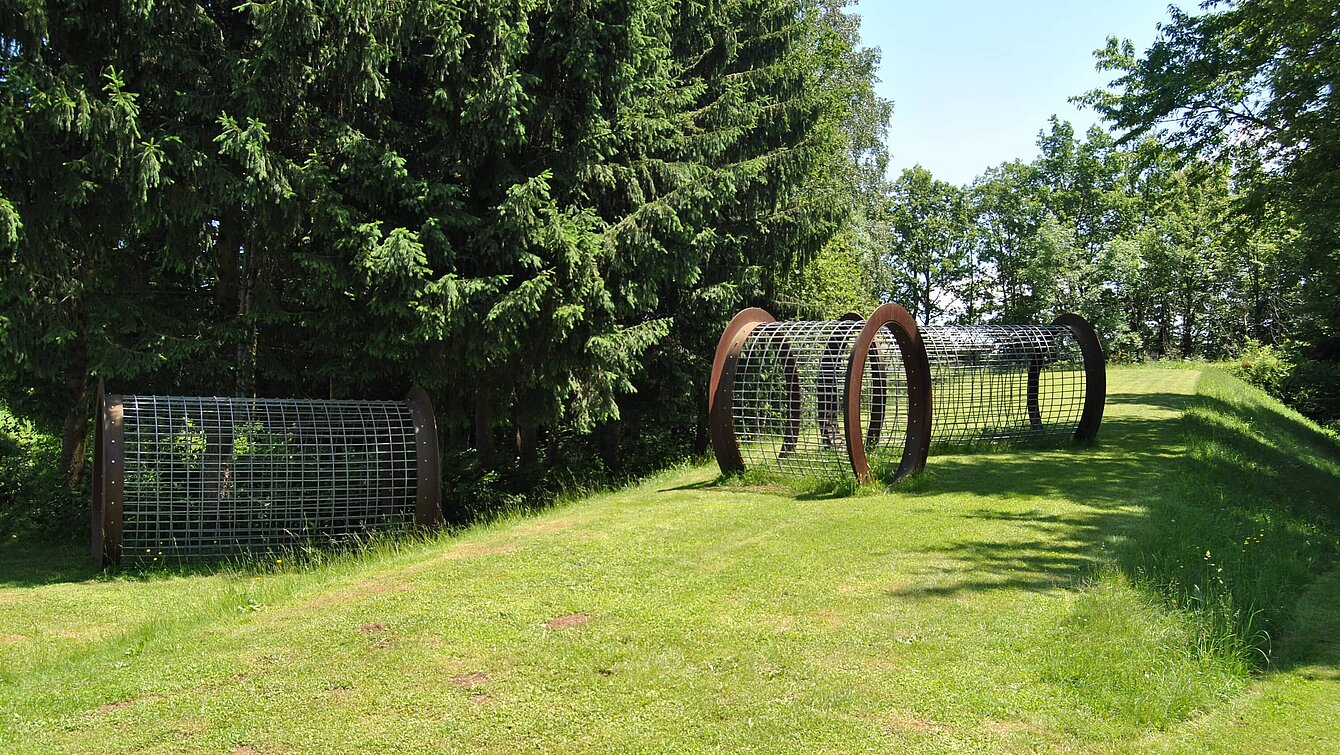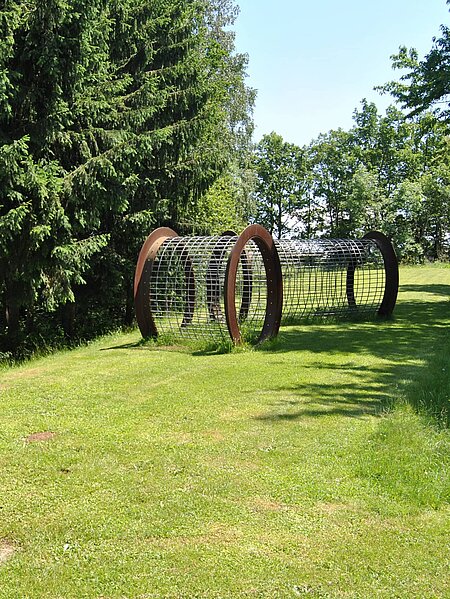Apparently floating or resting on the earth, these cylinders seem to be both light and heavy at the same time. Their material and the bulky edges contrast with the emptiness that is an important component of this three-part sculpture: an experience of empty space is produced in the viewer by the transparent grid structures, the hollow cavities of the cylinders themselves and the spaces between the objects. Because of the way in which they are positioned to face each other, the individual parts combine into a larger whole. As it shifts with the viewer’s perspective, this whole recomposes itself, condensing and then dispersing again.
Ajuste en el Vacio
Susana Solano, 1995/1996


Image Credits
Author
Rainer Fuchs
Location on map
Position 33
Owner
Museum Moderner Kunst, Stiftung Ludwig; Wien
Artist biography
Susana Solano
Show all
About the sculpture
Susana Solano’s sculptures are closely linked to questions of space. Her work focuses not only on the relation between the sculpture and its environment, but also on the sculpture’s own spatial qualities.
In her three-part work “Ajuste en el vacio“, Solano correlates sculptural spheres in an empty space, thus giving form and visibility to this process as a conceptual activity. Solano created three cylindrical spheres of varying lengths that consist of transparent grid-like structures with massive borders.
A dynamisation of the spheres is brought about through the ellipsoid layout of the cylinders. Their foundations are embedded in the ground in such a way that the sculptures seem to rest lightly on the earth without any foundations whatsoever, or even hover aboveground, maintaining a precarious balance. Only in facing each other do the individual parts form a corresponding whole that puts across a floating dynamic.
The sculpture opens up space and at the same time makes space its central topic through its transparent structures and gaps. Emptiness – nothing – is thus experienced as an integral part of the work. Through the cylindrical spheres and their relations with one another, empty space is given a precise structure and, reciprocally, makes the metal components of the work seem less heavy and massive.
The viewers themselves also play an essential role in the interpretation of this work, as they will move through gaps between the individual parts, linking them with their gaze. Walking around the object, viewers will notice how their perspective permanently changes, constantly creating different constellations and overlaps between the individual elements.
The sculpture thus becomes recognisable as a form of motion, which, though it does need material carriers, also has the potential of making these carriers vibrate gently.


















